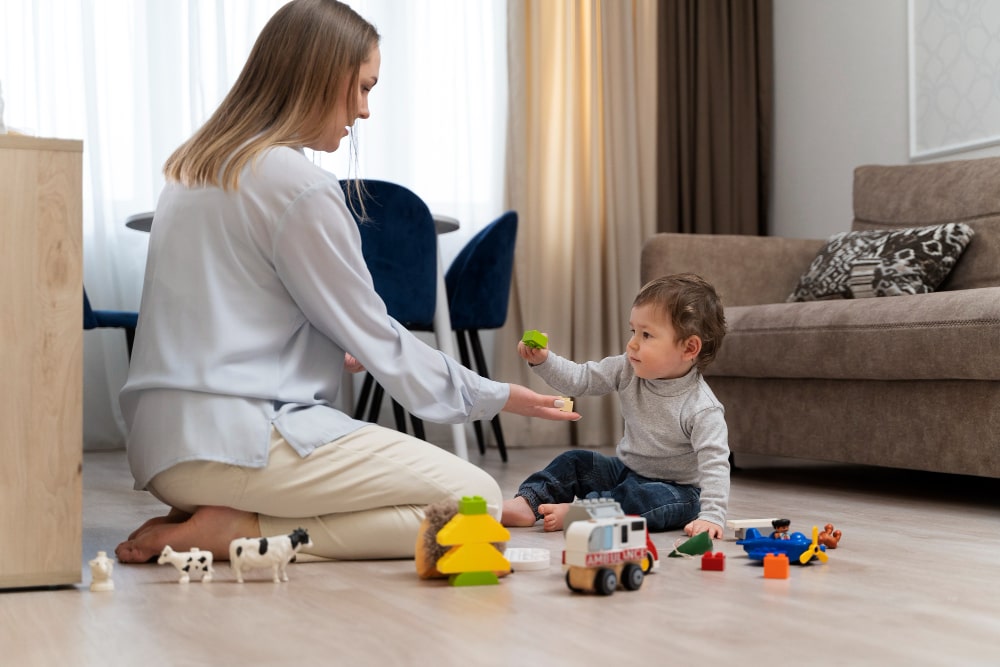In childhood play, parents find themselves facing a tech dilemma—striking the right balance between traditional and tech-driven toys for their children. While technology has undoubtedly brought innovation and excitement to the world of play, many mothers are left wondering how to ensure a well-rounded childhood that embraces both the tangible joys of traditional toys and the dynamic experiences offered by technology.
The Rise of Tech Toys
Childhood play has evolved significantly over the years. Gone are the days when traditional toys like building blocks, dolls, and board games ruled the playroom. In their place, we find many tech-driven gadgets, radio control items operated by rc batteries and chargers, and different model toys designed to educate and entertain children.
In recent years, technology has made a profound impact on the toy industry. From interactive robots to educational apps, a vast array of tech-driven toys are promising to enhance children’s cognitive abilities and provide hours of entertainment.
These innovations, however, come with their set of challenges, and it’s essential for parents, particularly mothers, to navigate this terrain thoughtfully.
The Benefits of Traditional Toys
Before delving into the tech dilemma, let’s not forget the timeless appeal of traditional toys. Wooden blocks, dolls, board games, and puzzles offer invaluable child development benefits. These toys stimulate creativity, promote social skills, and enhance fine motor skills.
The tactile nature of traditional toys fosters a deeper connection with the physical world and encourages imaginative play.
Striking the Right Balance
So, how can mothers strike the right balance between traditional and tech toys? The key lies in moderation and a thoughtful approach to toy selection. Consider these tips as a guide to navigating the tech dilemma:
1. Go for Educational Tech Toys
Embrace technology with purposeful educational toys. Look for tech-driven options that promote science, mathematics, and language learning. Apps that encourage creativity and critical thinking can provide a well-rounded educational experience. An audio player is another tech device that is a good educational tool, and most parents pick between the Toniebox vs. Yoto player as they are both the best quality ones you can get!
2. Set Time Limits
One effective way to strike a balance is by setting reasonable time limits for tech play. Establishing a daily or weekly schedule for tech time helps create structure and ensures your child doesn’t become overly reliant on screens.
While technology can be a valuable tool for learning and entertainment, moderation is crucial. Set specific time limits for tech play and balance it with outdoor activities and traditional toys to encourage diverse experiences.
3. Interactive Play
Encourage interactive play with tech toys that promote social engagement. Multiplayer games or interactive apps that encourage collaboration can foster communication skills and teamwork, ensuring that technology becomes a tool for connection rather than isolation.
4. Outdoor Exploration
In the era of smartphones and gaming consoles, the value of outdoor play should not be underestimated. Encouraging your child to explore the wonders of the natural world fosters physical fitness, imaginative play, and a connection with the environment. Traditional toys like bicycles, balls, and gardening tools can provide endless entertainment and contribute to your child’s overall well-being.
5. Classic Board Games
Introduce classic board games to combine learning and entertainment. Board games enhance critical thinking and strategic skills and provide an opportunity for family bonding. The tangible nature of board games can be a refreshing break from screen-based activities.
6. Create Tech-Free Zones
To maintain a healthy balance between traditional and tech toys, consider designating certain areas of your home as tech-free zones. Bedrooms and family dining areas are excellent choices for these zones, as they encourage face-to-face interactions and prevent the intrusion of screens during crucial family moments.
Having dedicated tech-free spaces reinforces the idea that there’s a time and place for everything, helping your child develop a more mindful approach to technology use. This helps establish a healthy boundary between screen time and other activities, fostering a more balanced and mindful approach to technology use.
7. Model Healthy Tech Habits
Children often learn by example, so be mindful of your own tech habits. Set a positive example by demonstrating healthy screen time management and engaging in non-digital activities. This sends a powerful message about the importance of balance in daily life.
8. Foster Creativity with Both Worlds
Balance doesn’t mean choosing one over the other. It’s about integrating the best of both worlds to foster holistic development. Encourage your child to merge traditional and tech toys in creative ways.
For example, they can use building blocks to construct a setting for their favorite digital characters or incorporate storytelling elements into interactive apps. This approach allows your child to enjoy the benefits of both types of toys while honing their creativity.
9. Parental Involvement
Engage with your child during playtime. Actively participating in both traditional and tech-driven activities allows you to monitor content, guide your child’s experiences, and create opportunities for meaningful conversations.
Play board games together, build structures with building blocks, or explore educational apps side by side. Joint playtime provides an opportunity for shared experiences and valuable learning moments.
Final Thoughts
Balancing traditional and tech toys is an ongoing journey that requires adaptability and a keen understanding of your child’s needs. By prioritizing educational value, limiting screen time, and incorporating a variety of play experiences, mothers can ensure their children enjoy a well-rounded childhood — one that embraces the benefits of both the past and the present.
Ultimately, it’s about fostering a healthy relationship with technology and empowering children to thrive in a world where traditional and tech-driven play is integral to the modern childhood experience.

